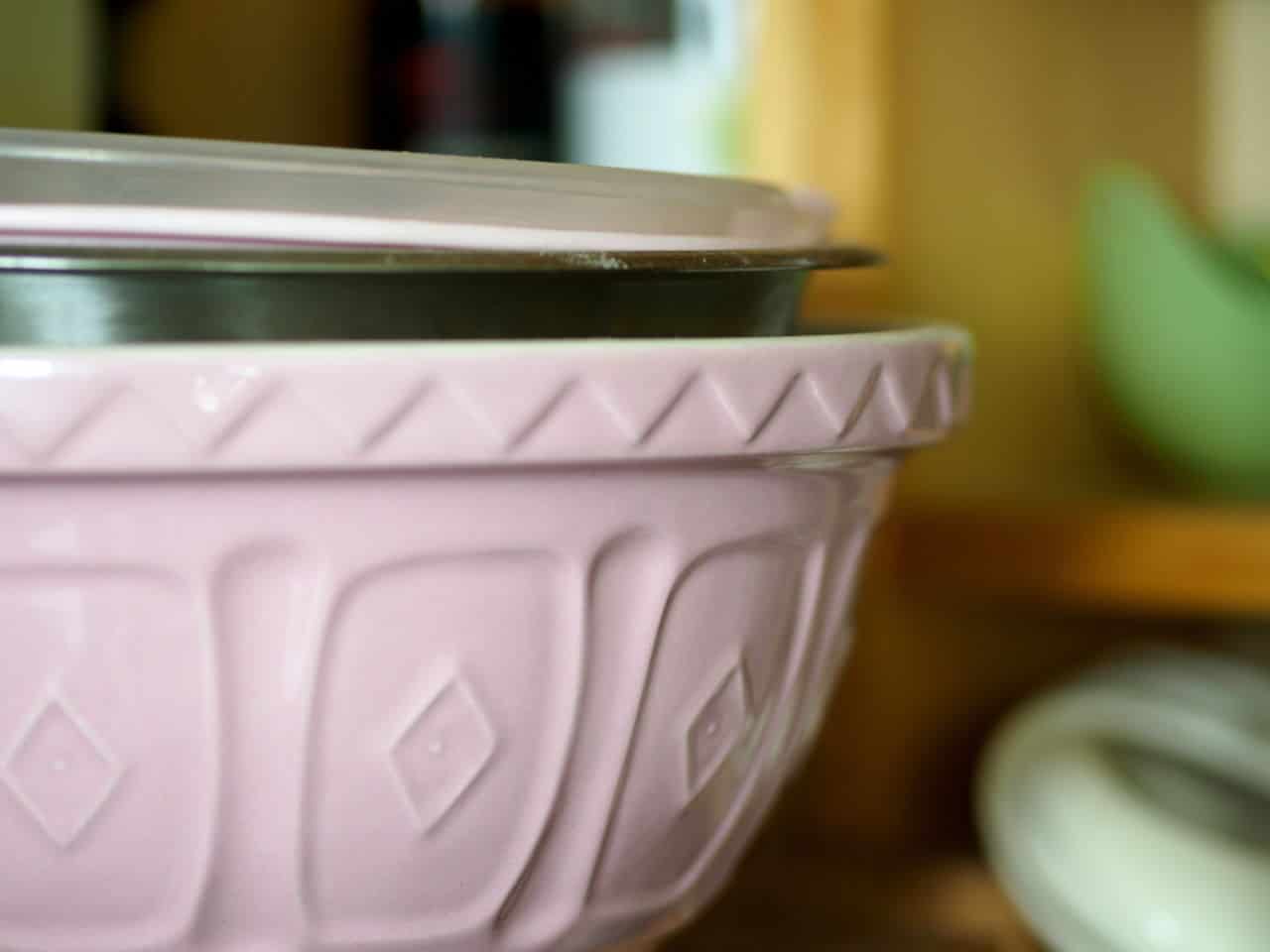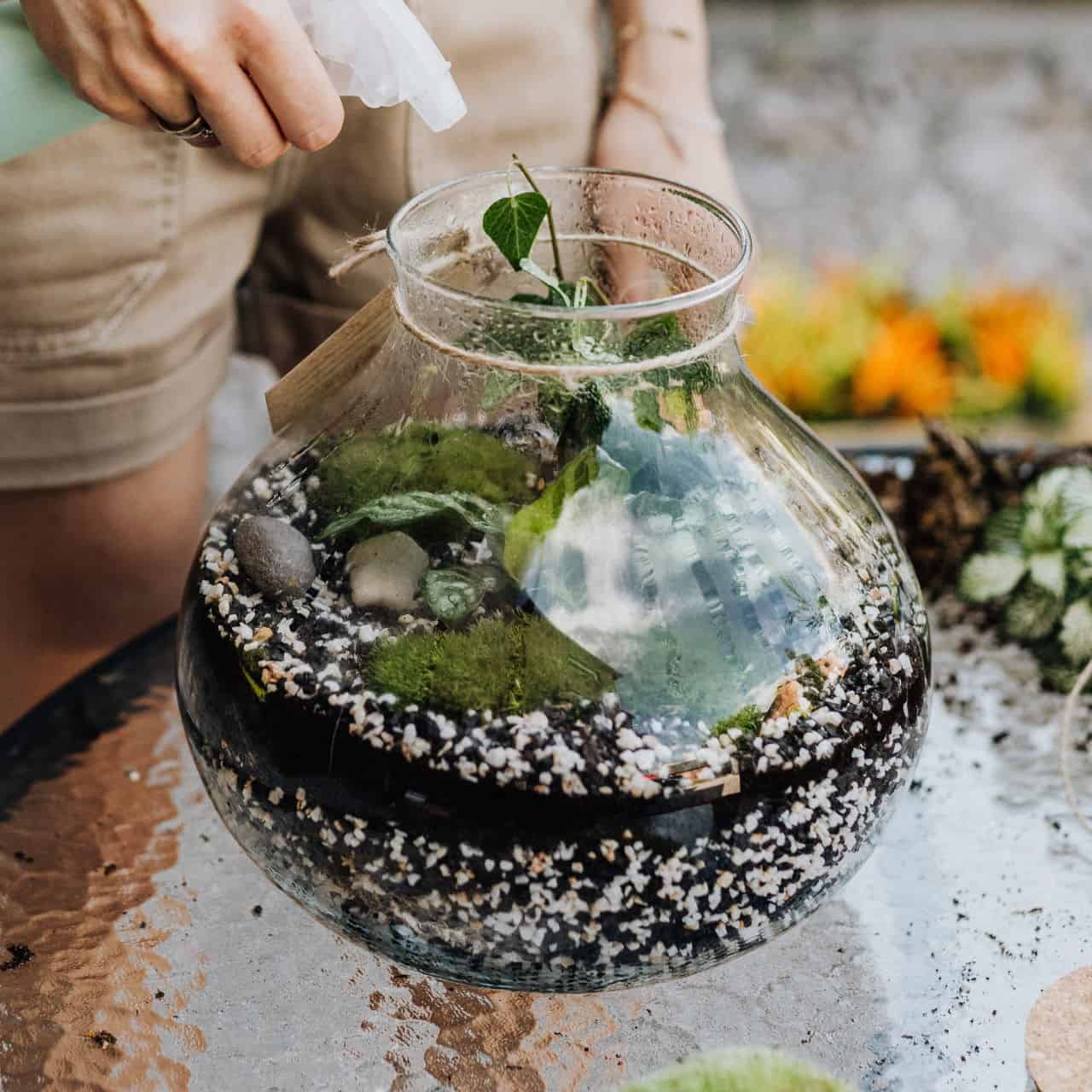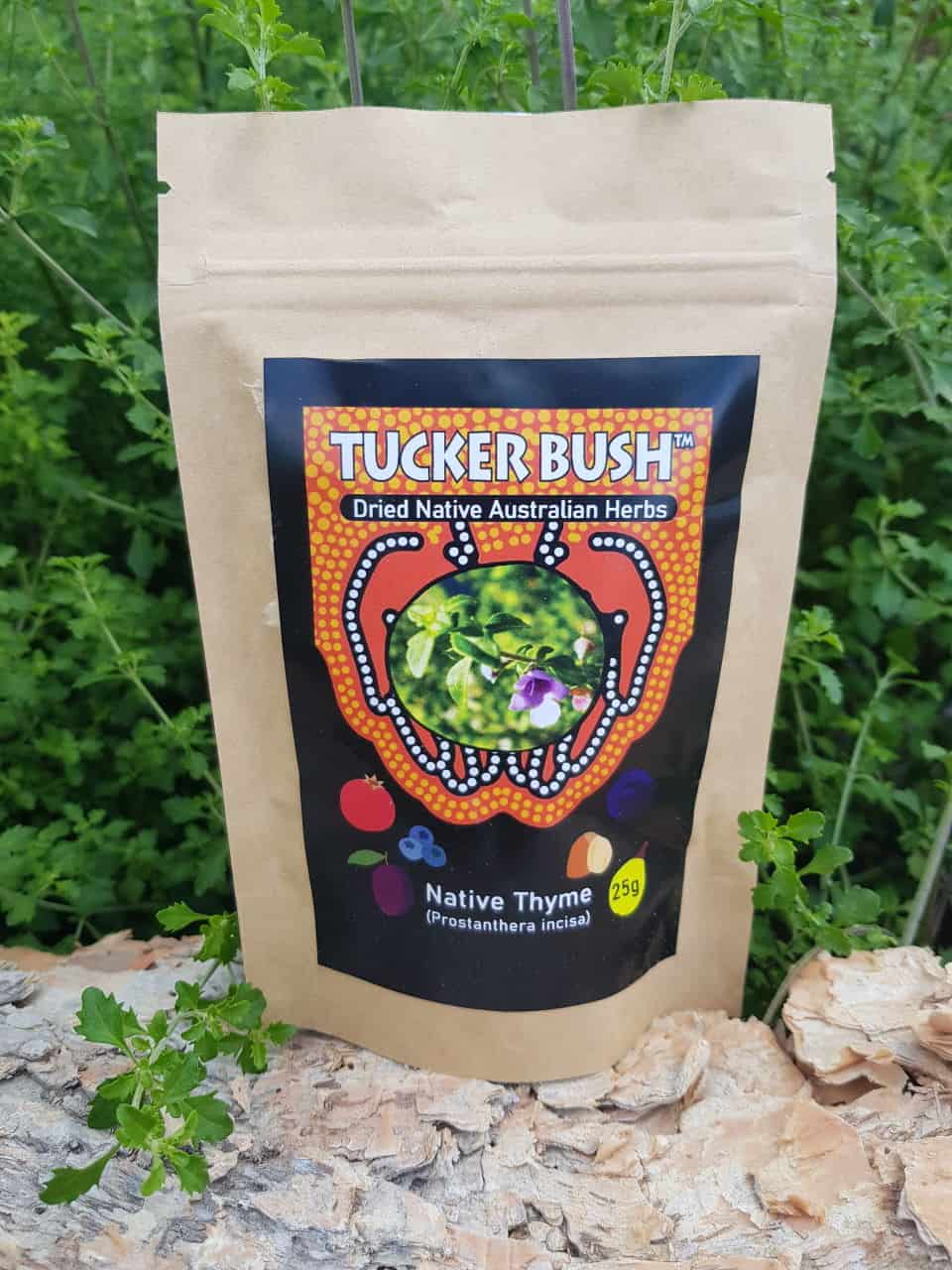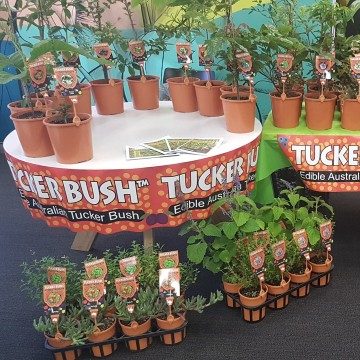Terrariums never go out of style, not so long as humans derive pleasure from living around plants. Staring into a tiny, living world can bring about a sense of peace and tranquility, giving us momentary respite from the demands of a busy day.
Making your own terrarium is a fun weekend project for the whole family, leaving you with beautiful microcosms of greenery for decorating your home or office. Loosely speaking, there are two types of terrariums you can make: open and closed.
In this post, we’ll cover specifically how to make an open terrarium with micro-food forest principles, combining native Australian bushfoods and other terrarium-friendly plants.
Before you start
Making your own terrarium is simple and fun, though it can get messy. Before you start, be sure to round up all of the essential ingredients — container, substrate, plants and decorations — and your gardening gear. If you’re assembling your tiny world indoors, this may also involve laying down a lining or tarp to keep spilled potting mix off the carpet.
Choosing a terrarium-friendly container
As long as the container holds water (ie. no holes in the bottom) and gives your plants access to sunlight, you can use just about any kind of container for a terrarium. For a bushfood terrarium, we recommend a container of 25–30cm diameter, about the size of a large mixing or serving bowl. This should give you enough space for several small plants to grow comfortably together.

Give your old crockery and cookware a second lease on life as a terrarium container. Ideal for repaired or reclaimed bowls, pots and pans that may no longer be suitable for preparing or serving food.. Photo by Brett Jordan on Unsplash
Preparing your terrarium substrate
Start with a layer of charcoal at the bottom. You don’t need much, just a pinch or two will do. This balances out the acidity in the soil and helps to control fungus and anaerobic bacteria.
Then, add a layer of porous gravel or stones. This layer can be as thick or thin as you like. Aside from looking stylish, it helps to trap air beneath the soil so your terrarium doesn’t get too boggy (which can contribute to root rot in terrarium plants).
Finally, add high-quality potting mix and perlite combined with a 1:1 ratio.
Choosing micro-forest plants for an open terrarium
At terrarium sizes, we’ll need to take the loose definitions of micro-forestry. It’ll be hard (near impossible) to comfortably cram more than a handful of species into such a small space whilst giving each plant room to grow and thrive. Your tree layer and shrub layer will always be relative to the total planting space, meaning you won’t be growing full-sized bushfood trees and vegetation.
As a guide, here’s our recommended quota for a bushfood micro-forest terrarium in a ceramic serving bowl that’s 30cm in diameter and 14cm deep:
1 x tree layer plant
1 x shrub layer plants
2 x herb layer plants
Not every bushfood plant in our range will be suitable for terrarium life. While many of our trees may thrive as bonsai specimens, you’d need to be a fairly advanced bonsai grower to get them to bear fruit. Beginner or intermediate terrarium-keepers will have an easier time with bushfood trees and shrubs grown for their edible leaves.
Like with small terrariums in general, your primary purpose would be decorative and educational, as plants grown in this environment tend to be too small to deliver “food”. Except, of course, if you plan to harvest the edible young leaves of herbs as microgreens.
Based on plant growth rates and relative sizes, here are a few of our favourite bushfood candidates for a tiny micro-forest terrarium:
Native Pepperberry
Grown for peppery leaves. Suitable for tree layer.
Midyim Berries
Berry-producing native hedge. Suitable for tree layer.
Native Thyme
Very aromatic native herb. Suitable for tree or shrub layer.
Ruby Saltbush
Edible leaves and berries. Suitable for tree or shrub layer.
Bush Mint
Aromatic native herb species. Suitable for the forest floor
Sea Parsley
Salty native herb with edible leaves. Suitable for tree layer.
WA Samphire
Needs salt to boost flavour. Suitable for tree or shrub layer.
Sea Purslane
Groundcover (edible weed). Suitable for the forest floor
Karkalla
Edible succulent groundcover. Suitable for tree or shrub layer.
Round Baby Pigface
Edible succulent groundcover. Suitable for the forest floor
Native Leek
Edible and ornamental leek. Suitable for shrub layer.
Muntries
Spreading, fruiting groundcover. Suitable for the forest floor
You can also branch out and combine your native bushfoods with other plants. This approach will give you more options for designing a tiny micro-forest to suit the style you prefer. Recommended for planting at tubestock or seedling side, here are a few of our favourite non-edible natives and exotic terrarium plants:
Maidenhair Fern
(Adiantum raddianum)
Non-edible fern. Loves humidity. Suitable for shrub layer.
Haworthia
(Haworthia spp.)
Attractive non-edible succulent. Suitable for shrub layer.
Native Viola
(Viola hederacea)
Trailing groundcover with edible flowers. Suitable for forest floor.
(Fittonia spp.)
Small, in varying colours. Suitable for shrub layer.
Coleus
(Plectranthus scutellarioides)
Colourful soft-leaved plant. Suitable for tree or shrub layer.
Echeveria
(Echeveria spp.)
A variety of quaint succulents. Suitable for shrub or herb layer.
Ponytail Palm
(Beaucarnea Recurvat)
Palm-like succulent. Suitable for tree layer.
Syngonium
(Syngonium spp.)
Leafy tropical vine. Suitable for shrub layer.
Begonia
(Begonia spp.)
Tropical flowering plant. Suitable for shrub or herb layer.
Caring for your terrarium
Water
Because a smaller container can only hold a limited amount of moisture, you’ll need to water your terrarium regularly, ensuring the substrate is kept damp.
You can use a spray bottle to maintain moisture in the soil between waterings, and to boost the humidity in your micro-forest environment. Use only clean filtered tap water or distilled water (ie. water free of fertilisers or compost run-off).
Pruning
With a pair of garden snips, carefully prune as needed to maintain size and remove rotting parts.
Fortunately, plants growing in a terrarium don’t tend to grow quickly, due to the limitations on space, and thus the available nutrients and resources. This means you won’t have to prune your plants nearly as often as you would if they were growing in your backyard.
Harvesting
Fruiting plants in a larger terrarium (think fish tank size) may bear very small seasonal quantities if well cared for.
Native herb and spice plants with edible leaves, on the other hand, can be harvested whenever you prune them, but expect only tiny harvests from a micro-forest of this size.
Fertilising
Although it’s generally not advisable to fertilise a terrarium, if you’re growing bushfood plant for their fruits, you may wish to apply a very small amount of slow release fruit-assisting fertiliser (such as potash or a slow-release fertiliser with a higher K ratio) just before the flowering season.
Resist the temptation to over-fertilise, as this can lead to a build-up of nutrients that may upset the balance of your substrate ecosystem.





